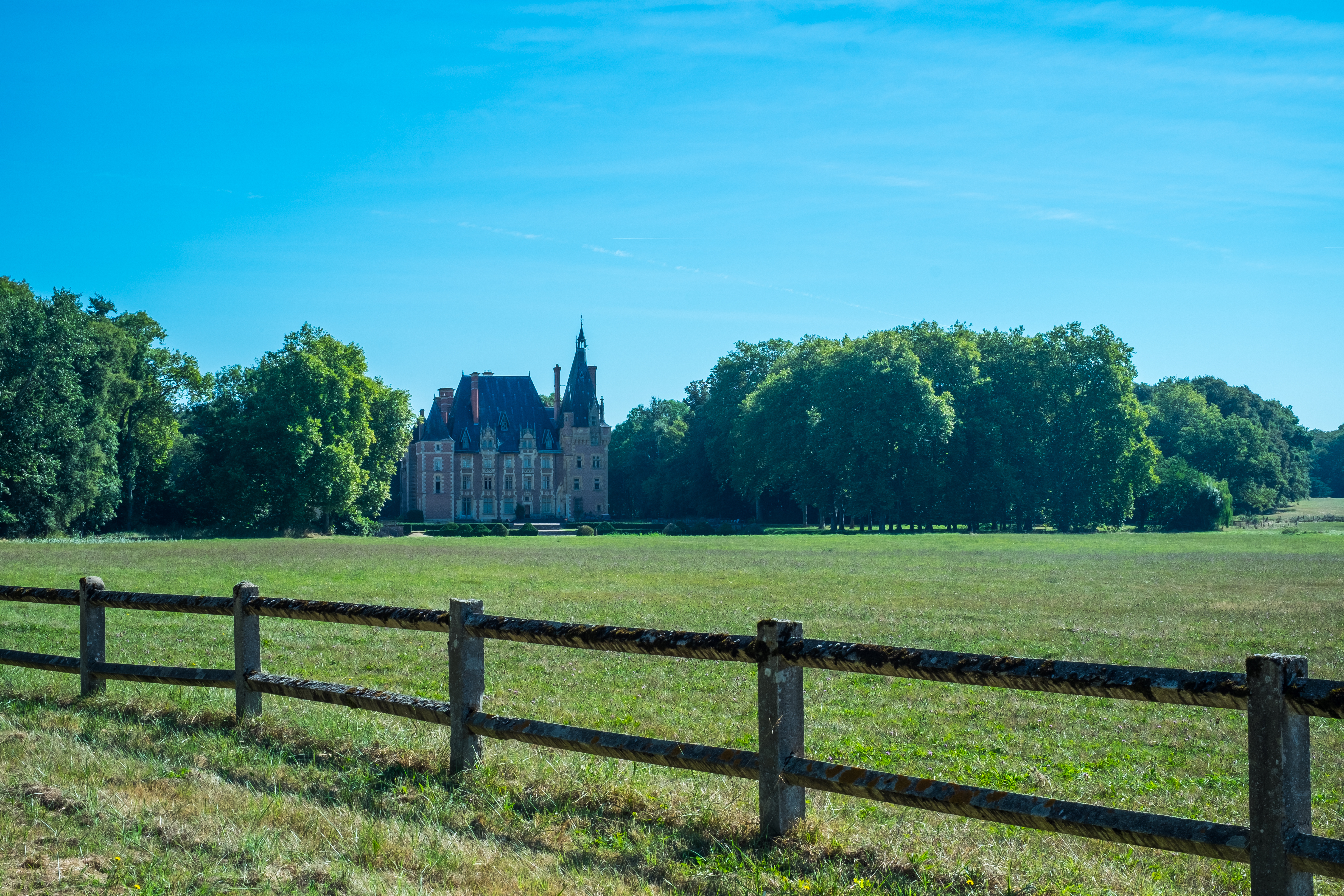What do I love most about driving the back roads of central France? Discovering a little corner of history that I would have missed if I only stuck to the guidebooks. When I set out that day in September, my objective was the mysterious church at St Menoux, passing through Villeneuve-sur-Allier (and regular readers will know how badly that went!).

Early in the day, though, with the fog still settled in the valleys around the D133, I came to a sign pointing off into the woods and promising “Chateau d’Avrilly / XVè – XIVè”. Great! I was in a fine mood after my evening in Moulins, the September day was bright and warm, and I had no deadline to constrain me. I turned into the narrow lane bracketed by lines of ancient trees and saw the great house around the bend.

Summer vacations were over so the chateau wouldn’t be open for tours until much later in the day. But the grounds were available for a good walk, so I had a chance to see what a beautiful house this is. Like many old French places, this one grew from a fortified castle, with thick walls and a moat, into a gracious country estate with delicate ornamentation and look-out points on the sharply-peaked roof.
Also like many old French estates, this one passed through family after family over the centuries. This is the ancient region known as the Bourbonnais, so it’s not surprising that Guillot Constant, the guy who built the Chateau d’Avrilly beginning in 1436, was treasurer to the Dukes of Bourbon when he got their permission to build. Other owners, all with some claim to nobility, succeeded him, but by 1629 financial difficulties forced them to sell the place to someone with real money: François Garnier, a counselor to Louis XIII.
He added more wings and more ornamentation, but even he couldn’t hold the Chateau for long, and it passed through a long line of different owners until 1873, when it was bought by the Count de Tournon, whose family still lives in the castle today.


It’s one of those histories that is probably important to the descendants of the different owners and not many others, so the Chateau d’Avrilly would likely remain an asterisk in the book of curiosities if it weren’t for what happened there on September 25th, 1909.

On that day, the massive French dirigible La République was flying back to Paris after a series of military exercises in the Bourbonnais. Its goal: to be back in the capital in time to fly over the Grand Palais as part of the celebration of the 1st “Salon de l’Aeronautique” in France.
But just as La République passed over the grounds of the Chateau d’Avrilly, one of its propeller blades snapped off and slashed through the balloon’s fabric. Gaston Deroubaix was an eyewitness to what happened:
It came down at a horrifying speed from a height of 100 – 120 meters. When the first help arrived, there was nothing but a heap of iron with scraps of fabric sticking out everywhere. And beneath 4,000 kilograms of material lay the bodies of 4 poor men [the dirigible’s military crew].

The crash of La République was treated as a great national tragedy in France, with elaborate funerals and massive coverage in the press. A monument to the four crewmen remains in Trevol, the little village nearest the Chateau d’Avrilly, and there's a plaque commemorating the event on the gatehouse at the entrance to the grounds.
A little more reflective now, I took to the D-roads again on my way to St Menoux -- but reminded again of how much history resides in the deep heart of France!
What have you discovered on your travels down the backroads of France? Please share this post with your friends, and share your experiences in the comments below.

